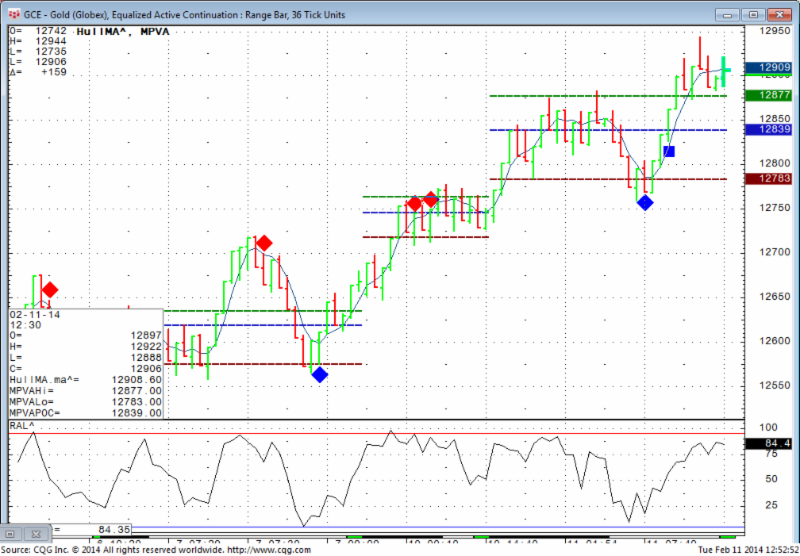Find out more about futures trading with Cannon Trading Company here.
In the world of finance, futures trading is a powerful tool for investors to speculate on the future price of various assets, including commodities, currencies, and financial indices. In recent years, with the advancement of technology, online futures trading has gained immense popularity among traders and investors. One company that stands out in this realm is Cannon Trading Company, offering a range of features that set it apart in the online futures trading industry. With multiple trading platforms, superb customer support, and a solid reputation on TrustPilot, Cannon Online Futures Trading has become a go-to choice for futures traders seeking reliability and efficiency.
Understanding Online Futures Trading
Futures trading is a financial strategy that involves speculating on the future price of an asset, such as gold, oil, or stock market indices. It allows traders to enter into contracts obligating them to buy or sell the asset at a predetermined price on a specified future date. This provides an opportunity to profit from price movements, whether they are rising or falling.
Online futures trading, as the name suggests, involves executing these transactions through online platforms provided by brokerage firms. This method offers numerous advantages, including accessibility, convenience, and the ability to execute trades in real-time. Traders can monitor market conditions, analyze charts, and execute orders from the comfort of their homes or offices.
The Importance of Choosing the Right Futures Broker
Choosing the right futures broker is a crucial step for any trader or investor. The brokerage you select can significantly impact your trading experience, affecting everything from order execution speed to customer support. Cannon Trading Company is a brokerage firm that has gained recognition for its exceptional services and features, making it a top choice for those engaged in online futures trading.
Cannon Trading Company: A Game-Changer in Online Futures Trading
- Multiple Trading Platforms
One of the standout features of Cannon Online Futures Trading is its offering of multiple trading platforms. These platforms cater to a wide range of traders, from beginners to experienced professionals, ensuring that everyone can find a solution that suits their needs.
- CQG: For the advanced trader looking for powerful tools and real-time data, Cannon offers the CQG platform. CQG is known for its robust charting capabilities, risk management tools, and access to a vast array of global markets.
- NinjaTrader: NinjaTrader is a popular choice for traders seeking a customizable platform. With features like automated trading strategies and extensive analysis tools, it appeals to those who want to tailor their trading environment.
- TradingView: Cannon Trading Company also integrates with TradingView, a versatile platform known for its intuitive user interface and social networking features. This platform is ideal for traders who value community-driven insights and collaborative trading.
Having access to multiple platforms means that traders can select the one that aligns best with their trading style and preferences. This flexibility is invaluable in the dynamic world of futures trading.
- Exceptional Customer Support
In the realm of online futures trading, where time can be of the essence, having access to responsive customer support is critical. Cannon Trading Company excels in this regard. Their commitment to providing top-notch support has earned them the highest ratings on TrustPilot, a testament to their dedication to client satisfaction.
When a futures trader needs assistance or has questions about their trades, they don’t want to wait endlessly for the phone to ring or for an email response. Cannon Trading understands this and ensures that their customers have quick and easy access to knowledgeable professionals who can address their concerns promptly.
- TrustPilot Reputation
TrustPilot is a widely recognized platform for customer reviews and ratings. A high TrustPilot rating indicates a company’s commitment to customer satisfaction and trustworthiness. Cannon Trading Company’s status as the highest-rated futures brokerage on TrustPilot speaks volumes about the quality of service and support they provide to their clients.
With numerous positive reviews and testimonials from satisfied customers, Cannon Trading has demonstrated its ability to consistently meet the expectations of online futures traders. This solid reputation instills confidence in traders and investors alike, making Cannon a preferred choice in the highly competitive futures trading industry.
Why Online Futures Trading?
Online futures trading offers several advantages over traditional methods of trading futures contracts. Let’s explore some of these benefits:
- Accessibility: Online trading platforms are accessible 24/7, allowing traders to monitor and execute trades at any time, irrespective of their geographical location. This accessibility is particularly valuable in a global marketplace where markets operate in different time zones.
- Cost-Efficiency: Online futures trading often involves lower transaction costs compared to traditional methods. Many online brokers offer competitive commission rates, which can significantly reduce trading expenses.
- Real-Time Information: Online platforms provide traders with real-time market data, news, and charts. This instant access to information enables traders to make informed decisions quickly.
- Automation: Many online trading platforms offer automation tools like algorithmic trading and stop-loss orders. These features can help traders implement their strategies more efficiently and reduce emotional trading.
- Diverse Asset Classes: Online futures trading platforms typically offer access to a wide range of asset classes, including commodities, currencies, stock indices, and interest rate futures. This diversification allows traders to explore various markets and diversify their portfolios.
- Risk Management: Online platforms often provide risk management tools that allow traders to set stop-loss and take-profit orders, helping to manage risk effectively.
Online futures trading has become a cornerstone of modern finance, empowering traders and investors with the ability to speculate on a wide range of assets. Cannon Trading Company has emerged as a leader in this field, offering a variety of features that cater to the diverse needs of traders. With multiple trading platforms, exceptional customer support, and a sterling reputation on TrustPilot, Cannon Online Futures Trading sets a high standard in the industry.
For those seeking to enter the exciting world of futures trading or looking for a reliable brokerage partner, Cannon Trading Company’s commitment to customer satisfaction and its dedication to providing cutting-edge trading tools make it a compelling choice. As technology continues to shape the financial industry, Cannon Trading stands at the forefront, ready to empower traders to make informed decisions and navigate the complex world of futures trading with confidence.
Ready to start trading futures? Call 1(800)454-9572 and speak to one of our experienced, Series-3 licensed futures brokers and start your futures trading journey with Cannon Trading Company today.
Disclaimer – Trading Futures, Options on Futures, and retail off-exchange foreign currency transactions involves substantial risk of loss and is not suitable for all investors. Past performance is not indicative of future results. You should carefully consider whether trading is suitable for you in light of your circumstances, knowledge, and financial resources. You may lose all or more of your initial investment. Opinions, market data, and recommendations are subject to change at any time.











